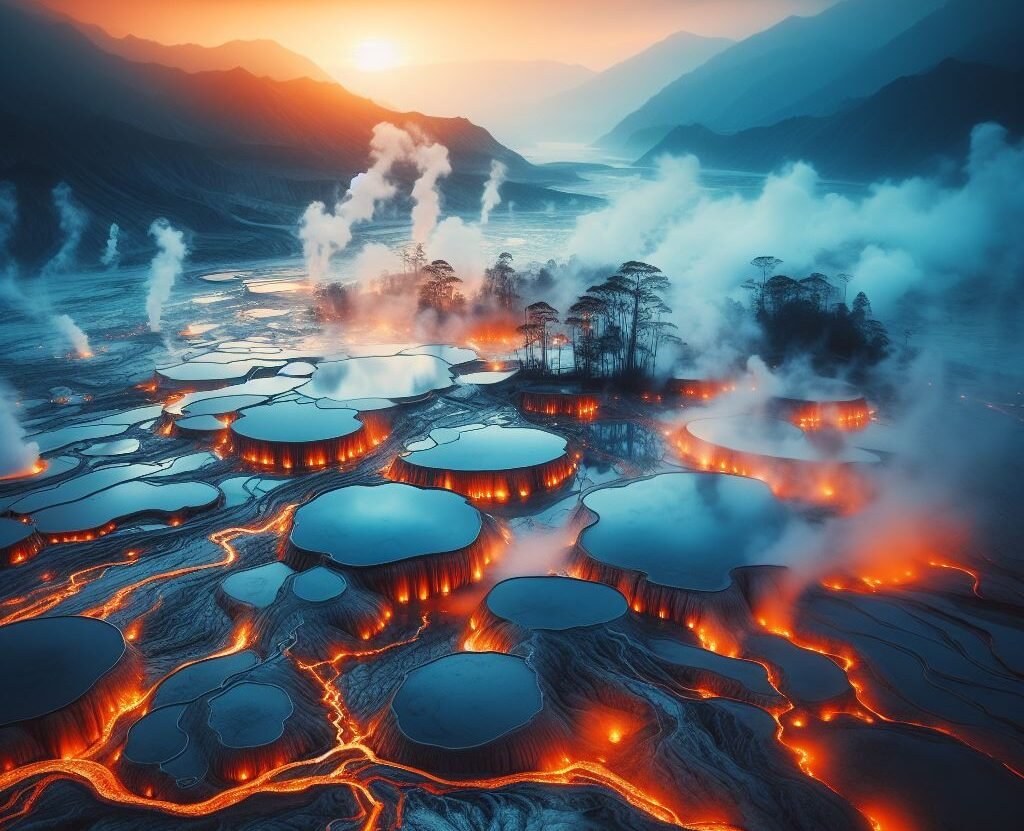What makes Earth so extraordinary, while other planets like Mars and Venus remain barren and lifeless? Earth’s perfect harmony isn’t just a coincidence. In fact, it’s the result of countless factors working together to create a world where life can thrive. But can we learn anything from our planetary neighbours? Let’s dive into what makes Earth unique and uncover lessons from Mars, Venus, and beyond.
Why Earth Can Support Life

Save for later! 📌
Earth is in the “Goldilocks Zone,” the perfect distance from the Sun to allow liquid water—essential for life. Its oxygen-rich atmosphere lets us breathe and shields us from harmful solar radiation. Additionally, Earth’s magnetic field protects us from solar winds, ensuring its perfect harmony.

Another reason Earth supports life is its balance of ecosystems. For instance, forests, oceans, and animals all play a role in keeping our planet healthy. If one part of this system is damaged, it can affect everything else. Consequently, it’s so important to take care of our planet.
Mars: Earth’s Neighbour

Love it? Pin it for later! 📌
Mars is often called Earth’s “sister planet,” but it’s very different from our world. For one, Mars has a thin atmosphere, which means it can’t trap heat or protect itself from the Sun’s radiation. As a result, the surface of Mars is extremely cold. Scientists believe that Mars once had liquid water. However, today, it only has ice in some places.

Without a strong magnetic field, Mars couldn’t hold onto its atmosphere. Over time, solar winds stripped it away, leaving the planet dry and barren.

By studying Mars helps scientists understand how important Earth’s magnetic field is for keeping our atmosphere and water, part of the perfect harmony we have here.

Save this for later! 📌
Learn more about how Mars inspires ideas for self-sufficient living in our post, Mars to Earth: Pioneering Self-Sufficient Living Across Planets.
Venus: A Warning Sign

Venus is often called Earth’s twin because it’s about the same size. However, it’s nothing like Earth when it comes to habitability. For example, Venus has a thick atmosphere made mostly of carbon dioxide. This creates a runaway greenhouse effect, trapping heat and making Venus the hottest planet in the Solar System. Its surface is even hotter than Mercury, the closest planet to the Sun.

Mars and Venus? Pin it! 📌
Venus doesn’t have liquid water because the extreme heat caused it to evaporate long ago. Therefore, it’s a good reminder of why controlling greenhouse gases on Earth is so important. If we’re not careful, we could tip the balance and make our planet less liveable, disrupting Earth’s harmony.
The Role of Jupiter and Saturn

Even the giant planets like Jupiter and Saturn play a role in Earth’s habitability. These gas giants act like cosmic shields, protecting Earth from asteroids and comets.

For instance, their strong gravity pulls in many of these objects before they can reach us. Without them, Earth might face more frequent and dangerous impacts. Consequently, their presence is vital to maintaining life on Earth.

What We Can Learn from Other Planets
By studying Mars, Venus, and other planets, we learn just how fragile Earth’s perfect harmony is. Moreover, Earth is the only planet with the right mix of air, water, and protection to support life.

This balance didn’t happen by accident. Instead, it’s something we need to protect. Learn more about planetary exploration at the NASA Mars Exploration Program.

Find this inspiring? Save it now! 📌
Human activities like deforestation and burning fossil fuels are putting Earth’s balance at risk. For instance, we can see the effects in rising temperatures, melting ice caps, and extreme weather.

These changes remind us that our planet isn’t invincible. Therefore, it’s up to all of us to take action to maintain Earth’s perfect harmony.
How You Can Help Protect Earth

There are many ways you can help keep Earth’s balance. For example, simple steps like recycling, using less plastic, and conserving water make a big difference. Additionally, you can support renewable energy like solar and wind power. Every action counts when it comes to protecting our home and maintaining the harmony of our planet.

Planetary wonders, pin it! 📌
By learning from other planets, we see just how lucky we are to live on Earth. Mars shows us what happens without a strong atmosphere, and Venus warns us about too much carbon dioxide. Consequently, these lessons inspire us to take better care of the only planet we can call home.

Earth’s Balance
Earth’s perfect harmony is truly amazing. From the Goldilocks Zone to its protective atmosphere, everything about our planet works together to support life. Furthermore, by studying Mars, Venus, and the rest of the Solar System, we understand how unique and fragile Earth really is. Let’s use this knowledge to protect our planet and ensure it remains a home for generations to come.




